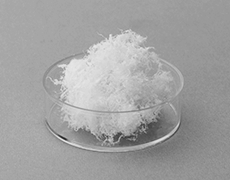Resources
Categories
Applications of atelocollagen/collagen in regenerative medicine

R&D of activated regenerative medicine
In recent years, the conditional and time-limited approval system has made it possible for patients to access regenerative medicine products more quickly. This revised approval system permits the estimation of efficacy and confirmation of safety based on a limited number of clinical studies, mandating further evaluation of effectiveness and safety within a certain period after approval. This system not only accelerates the research and development of regenerative medicine products in Japanese companies, but also seems to be increasing the momentum of product development in Japan by foreign companies.
Regenerative medicine products combining collagen and cells launched world-wide
How many regenerative medicine products that combine cells and collagen are on the market world-wide?
A survey in September 2017 revealed that 10 products that use collagen have been launched as regenerative medical products. When grouped by indication, cartilage regeneration products, which have advanced from the earliest basic research, is the best represented with five products; products related to skin, a topic that has been commercialized as long as cartilage regeneration, is represented by four products; a single urological product, a topic that is still rare in regenerative medicine, rounds out the list.
| Approved regenerative medicine products that combine cells and collagen | |||
|---|---|---|---|
| Country | Company | Trade name | Outline |
| Japan | Japan Tissue Engineering Co., Ltd. | JACC | Autologous cartilage cells+Atelocollagen gel |
| USA | Organogenesis Inc. | Apligraf | Allogenic keratinocytes+Allogenic fibroblasts+Collagen gel |
| USA | Organogenesis Inc. | GINTUIT | Allogenic keratinocytes+Allogenic fibroblasts+Collagen gel |
| USA | I-horus Inc. | OrCel | Allogenic keratinocytes+Allogenic fibroblasts+Collagen sponge |
| USA | Organogenesis Inc. | TransCyte | Allogenic fibroblasts+Collagen coated nylon mesh |
| USA | Vericel Corp. | MACI | Autologous cartilage cells+Collagen membrane |
| Australia | Arthro Kinetics Biotechnology GmbH | CaRes | Autologous cartilage cells+Collagen gel |
| Germany | TETEC AG | Novocart 3D | Autologous cartilage cells+Collagen sponge |
| Germany | UroTiss Europe GmbH | MukoCell | Autologus oral mucosal epithelial cells+Collagen sheet |
| Australia | Orthocell Ltd. | Ortho-ACI | Autologous cartilage cells+Collagen membrane |
Note: This list was produced on the basis of publicly available information; it may not reflect the most recent developments.
In Japan, regenerative medicine products that employ autologous cells predominate, given the decreased risk of immunological rejection; however, such products tend to be expensive to manufacture. In contrast, allogeneic products, which can be used immediately when necessary and typically can be produced at lower costs, are in active development overseas.
Evaluation of the collagen used in each product reveals that collagen is employed in various forms, ranging from gel to membrane (sheet), sponge, and coating. Collagen not only has high affinity for cells but also high plasticity; even if a collagen scaffold is used, the shape and function of such scaffolds vary widely. In addition, collagen scaffolds that incorporate other substances such as poly(lactic acid) (PLLA) polymers and glycosaminoglycans are the subjects of active investigation. Thus, the possible use of collagen in the field of regenerative medicine is expected to continue to expand.
Standards and regulations around collagen
Cattle and pig skin often are used as raw material sources of collagen. The use of bovine collagen raises concerns regarding bovine spongiform encephalopathy (BSE); however, the cause of BSE, an abnormal prion protein, is not known to accumulate in the skin, so bovine-source collagen typically is excluded from specified risk materials. Regarding biological materials used in manufacturing processes such as regenerative medicine products, medical devices, and medicines, there are various standards and regulations that need to be considered. For example, the following parameters have been established in the context of standards and regulations regarding the production of medical devices.
| Issued by | Standards/Regulations |
| Japan | Standards for Biological Materials |
| USA | Medical Devices Containing Materials Derived from Animal Sources (Draft Guidance for Industry and FDA Staff) |
| European Union | Commission Regulation (EU) No 722/2012 of 8 August 2012 (concerning particular requirements as regards the requirements laid down in Council Directives 90/385/EEC and 93/42/EEC with respect to active implantable medical devices and medical devices manufactured utilising tissues of animal origin) |
| International Stnadard | ISO22442 (Medical devices utilizing animal tissues and their derivatives) |
Each standard/regulation describes matters such as risk management, confirmation of eligibility of animals used for raw materials, traceability, prevention of cross-contamination at the time of slaughter and processing, and virus testing. By meeting these standards and regulations, it is possible to make medical devices that take advantage of collagen’s features such as high bio-compatibility.

